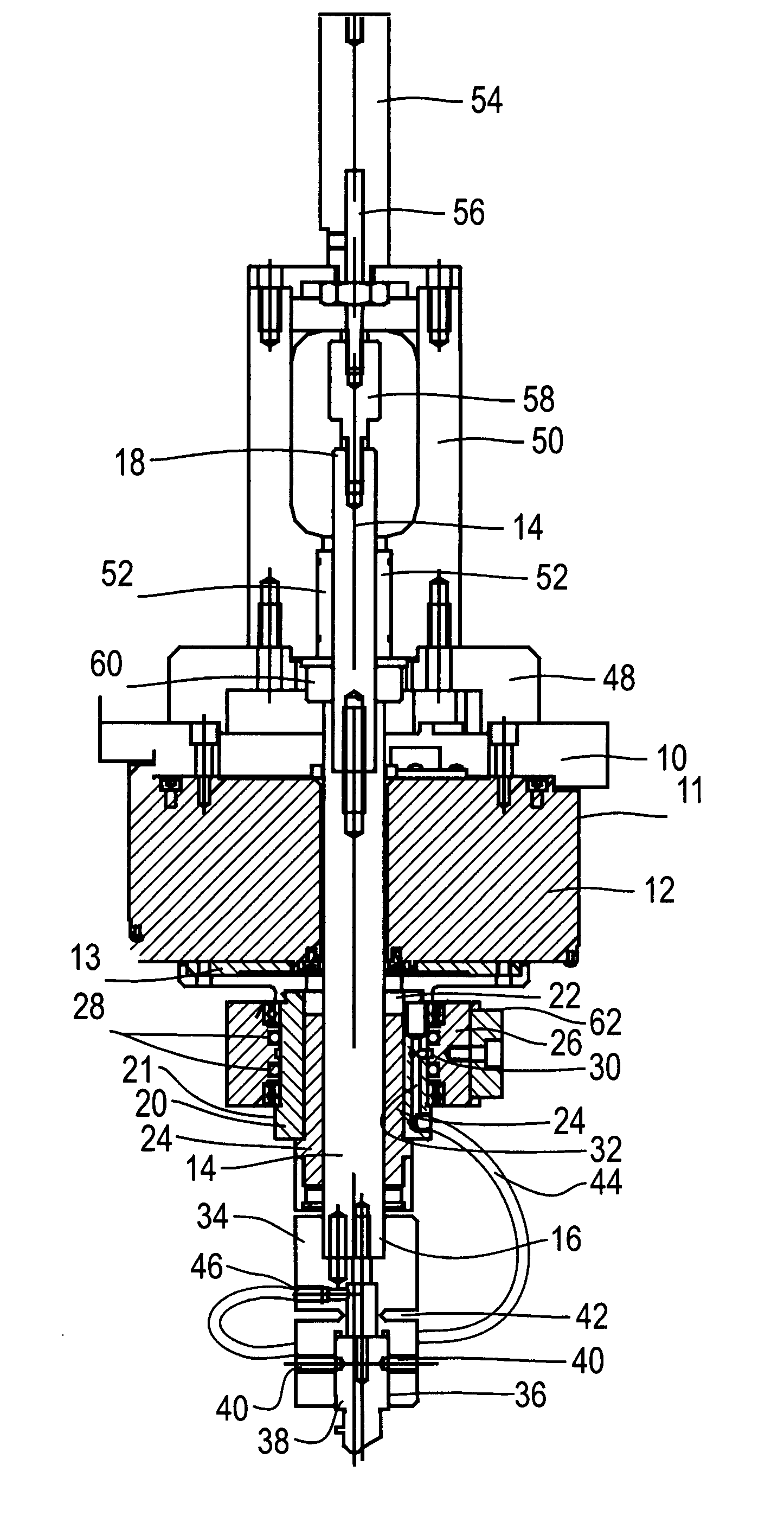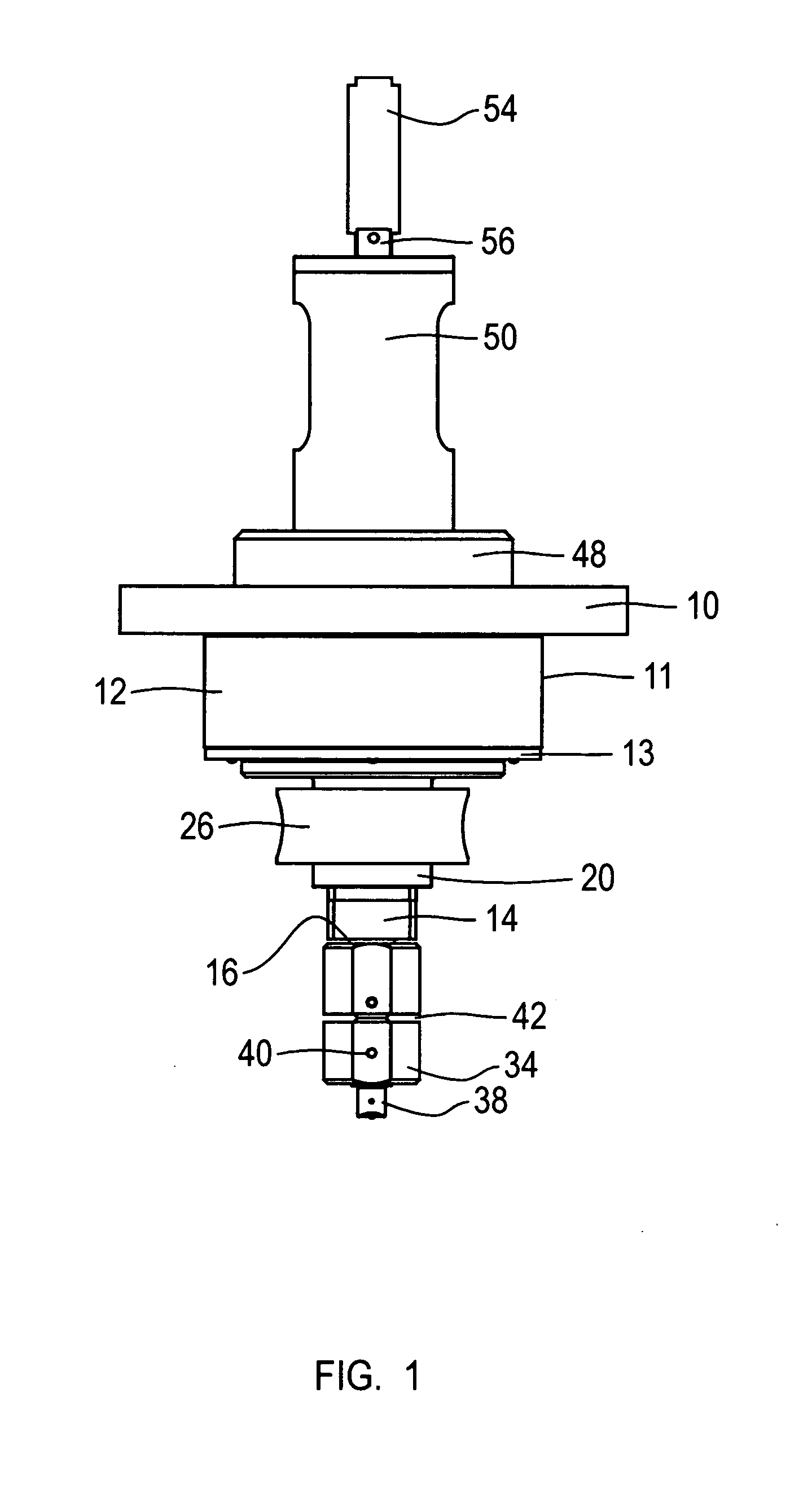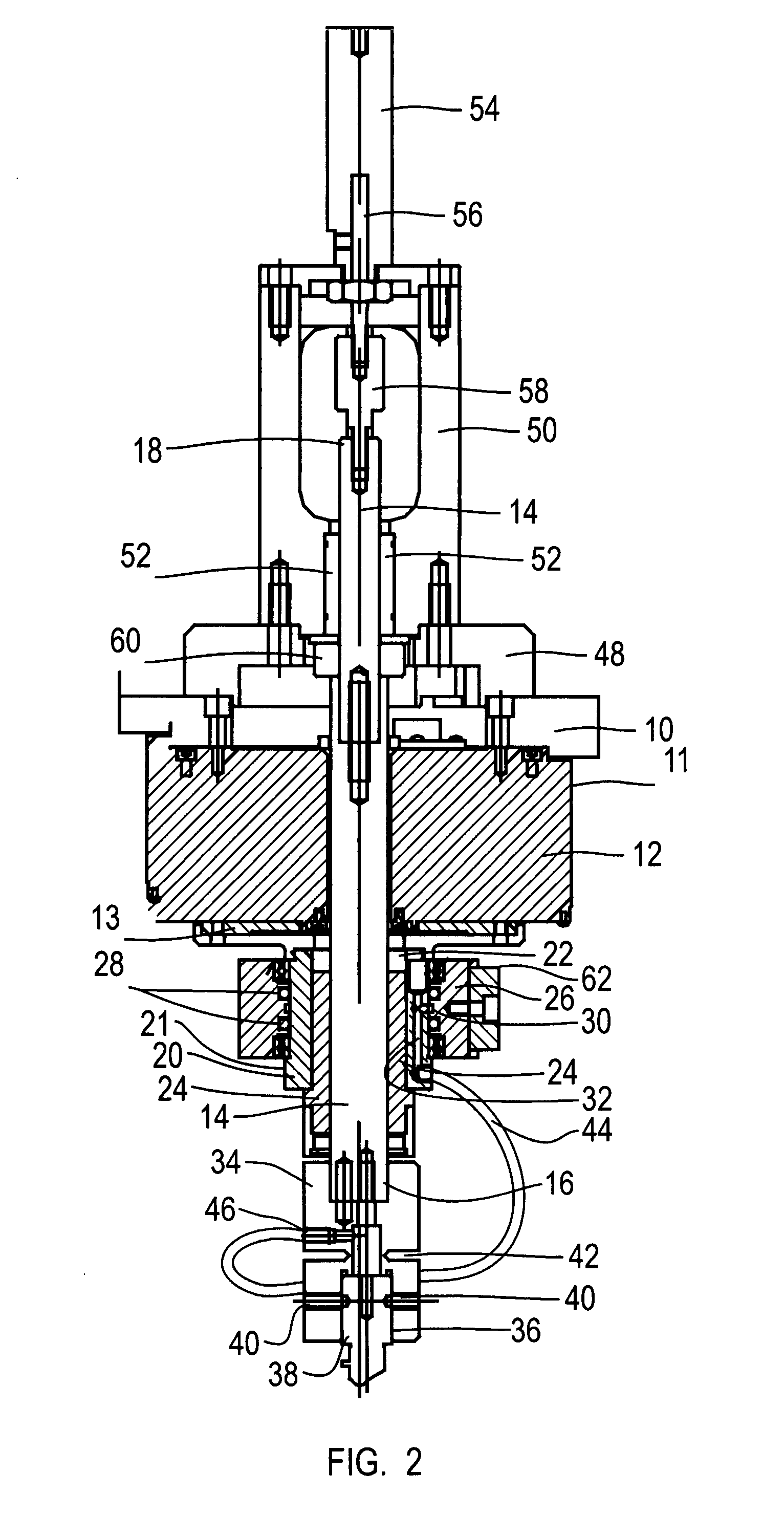Cutting head assembly
a cutting head and assembly technology, applied in the field of glass plate cutting heads, can solve the problems of non-powered floating head cutting tools, inaccuracy of parts from desired patterns, and inaccuracy of cut edges of desired workpiece shapes, etc., to achieve low operating parts, high torque, and low cost
- Summary
- Abstract
- Description
- Claims
- Application Information
AI Technical Summary
Benefits of technology
Problems solved by technology
Method used
Image
Examples
Embodiment Construction
)
[0017]The cutting head assembly of the present invention is designed for use with an X, Y two plane cutting table. Commonly the cutting table will include a bridge riding on rails for motion in the X direction and a cutting head mount positioned on the bridge for movement in the Y direction. The cutting head mount (not shown) includes a mounting flange 10. Fixed to and directly under the mounting flange 10 is a hollow bore high torque servo motor 12. The housing 11 of the motor 12 is fixed to the flange 10. In operation, the motor 12 drives a rotating plate 13 that extends below the motor housing 11. A spline shaft 14 extends through the hollow bore of the servo motor 12 and through the flange 10. The spline shaft 14 has opposed ends 16, 18 extending below (end 16) the servo motor 12 and above (end 18) the flange 10.
[0018]A drive adaptor 20 is fixed to the rotating plate 13 of the servo motor 10. The drive adaptor 20 defines a bore 22 about its center line through which the spline ...
PUM
| Property | Measurement | Unit |
|---|---|---|
| circumference | aaaaa | aaaaa |
| flexible | aaaaa | aaaaa |
| dimension | aaaaa | aaaaa |
Abstract
Description
Claims
Application Information
 Login to View More
Login to View More - R&D
- Intellectual Property
- Life Sciences
- Materials
- Tech Scout
- Unparalleled Data Quality
- Higher Quality Content
- 60% Fewer Hallucinations
Browse by: Latest US Patents, China's latest patents, Technical Efficacy Thesaurus, Application Domain, Technology Topic, Popular Technical Reports.
© 2025 PatSnap. All rights reserved.Legal|Privacy policy|Modern Slavery Act Transparency Statement|Sitemap|About US| Contact US: help@patsnap.com



